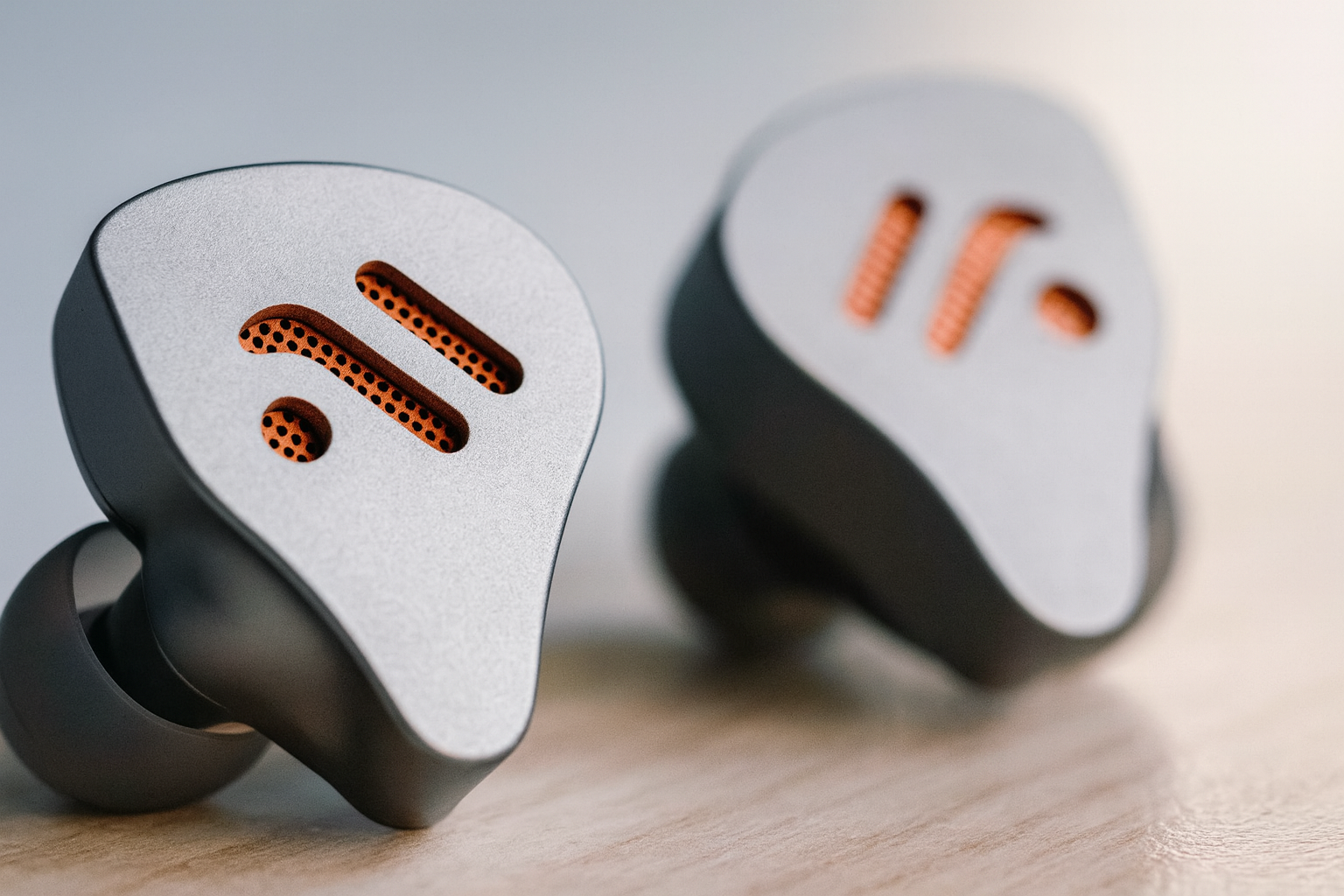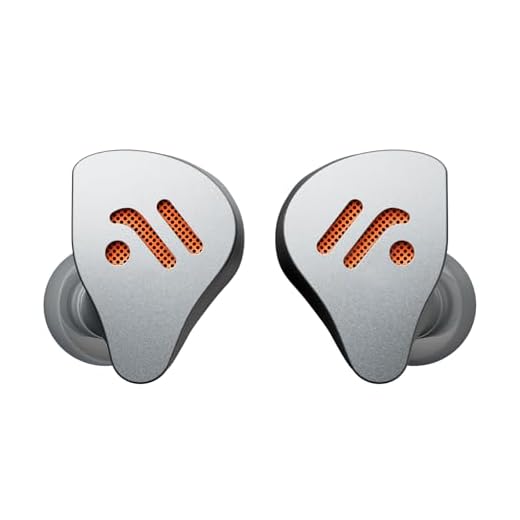There’s a moment in every audiophile’s journey when the gear disappears. The headphones melt away, the room fades, and suddenly — there it is — the music, suspended in space, unmoored from the drivers that created it. It’s a moment of sonic vanishing, of presence without source. And it’s rare.
The Fosi Audio IM4 is chasing that moment.
Not with brute force or boutique pricing, but with a design philosophy that feels quietly radical: an open-back in-ear monitor that doesn’t just borrow from full-size headphones — it reimagines what IEMs can be.
🌀 A Breath of Air in a Sealed World
In-ear monitors, by their nature, are closed. They seal the ear canal, isolate the listener, and deliver sound with intimacy and precision. But they also trap pressure, reflect sound internally, and — over time — can fatigue the ear and the mind. The IM4 breaks that mold.
Fosi’s open-back architecture introduces a literal breath of fresh air. Nine front-facing ports and a rear acoustic chamber vent the enclosure, reducing pressure buildup and internal reflections. The result? A sound that feels less like it’s being injected into your skull and more like it’s blooming around you.
This isn’t just about comfort — though the fatigue-free tuning is real. It’s about spatial realism. The IM4 doesn’t just present music; it stages it. Vocals hover. Cymbals shimmer and decay into the ether. Bass notes don’t thump — they resonate.
In a world of sealed IEMs, the IM4 opens a window.
🧲 Dual Magnet, Dual Chamber, Singular Focus
At the heart of the IM4 is a 10mm beryllium-coated dynamic driver — but it’s what surrounds it that makes the magic. Fosi employs a dual-magnet system (N52 grade) for enhanced control and responsiveness. Think of it as a turbocharged motor for the diaphragm, delivering faster transients and tighter bass without sacrificing warmth.
Then there’s the dual-chamber design — a rare feature in IEMs, more common in high-end over-ear headphones. The front chamber, with its nine-port layout, balances pressure and frequency response. The rear chamber, lined with acoustic damping wool, tames standing waves and extends treble detail without harshness.
Together, these elements create a sound that’s both articulate and expansive. The IM4 doesn’t shout. It sings.
🎛️ Tuning That Listens Back
One of the most compelling aspects of the IM4 is how it was tuned — not just by engineers, but by listeners. Fosi gathered feedback from audiophiles, musicians, and casual listeners alike, shaping a frequency response that’s balanced, musical, and genre-agnostic.
But they didn’t stop there.
The IM4 ships with two interchangeable nozzles — one brass, one aluminum — each subtly altering the sound signature. Brass enhances midrange presence and treble clarity, perfect for vocal-forward tracks or acoustic sessions. Aluminum softens sibilance and adds a touch of warmth, ideal for long listening or bass-heavy genres.
Add to that three sets of tuning eartips (Balanced, Bass, Deep Bass) in multiple sizes, and you’ve got a modular tuning system that invites experimentation. It’s not just about finding your sound — it’s about curating it.
🧵 Form Follows Feel
Let’s talk comfort. Each IM4 earpiece weighs just 7 grams — lighter than a AAA battery — and is sculpted from CNC-machined aluminum alloy. The finish is sandblasted and anodized, giving it a tactile, hypoallergenic surface that feels as good as it looks.
The design is subtly ergonomic: rotating ear housings adapt to your anatomy, while the memory metal headband (yes, it’s a headbanded IEM) adds stability without clamping. The earpads — a hybrid of perforated leather and breathable fabric — rest gently, never intruding.
It’s a design that invites long sessions. Not just because it’s light, but because it disappears.
🔌 Cable Matters
The IM4’s cable is detachable (2-pin 0.78mm) and thoughtfully executed. Four strands of silver-plated oxygen-free copper (OFC), braided for durability and signal integrity. It terminates in a 3.5mm jack, but Fosi includes a 4.4mm balanced option for those with higher-end sources.
This isn’t just about audiophile cred. It’s about future-proofing. Want to swap in a balanced cable? Go for it. Prefer a Bluetooth adapter for casual listening? Easy. The IM4 doesn’t lock you in — it opens doors.
🧡 Aesthetic Identity
In a sea of black shells and carbon fiber accents, the IM4 stands out — quietly. Its minimalist aluminum body is punctuated by a bold orange grille and a subtle logo. It’s not flashy, but it’s confident. Like a well-tailored jacket with a surprise lining.
There’s a sense of design integrity here — a feeling that every element, from the nozzle threads to the cable strain relief, was considered. It’s not luxury for luxury’s sake. It’s function, refined.
🌍 Why This Matters
The IM4 isn’t just another IEM. It’s a statement — that open-back design belongs in the in-ear world. That tuning can be collaborative. That comfort and clarity aren’t mutually exclusive.
In a market dominated by sealed shells and V-shaped EQs, the IM4 offers something rare: neutrality without sterility, spaciousness without bloat, detail without fatigue. It’s not trying to impress you in the first 30 seconds. It’s trying to stay with you for hours.
And it does.
🧭 Who Is This For?
If you’re a stage musician looking for isolation, the IM4 isn’t your tool. But if you’re a listener — a lover of soundstages, of nuance, of music that breathes — this might be your next revelation.
It’s for the late-night listener, the playlist curator, the one who hears the room around the recording. It’s for those who know that sometimes, the best sound is the one that disappears.
🛠️ Final Thoughts
Fosi Audio has done something quietly revolutionary with the IM4. They’ve taken the intimacy of IEMs and infused it with the air and spaciousness of open-back headphones. They’ve built a modular, listener-tuned system that invites exploration. And they’ve wrapped it all in a design that feels as good in the hand as it does in the ear.
In a way, the IM4 isn’t just a product. It’s a philosophy — that great sound doesn’t have to be loud, closed, or expensive. It just has to be honest.
And in that honesty, the gear disappears.


